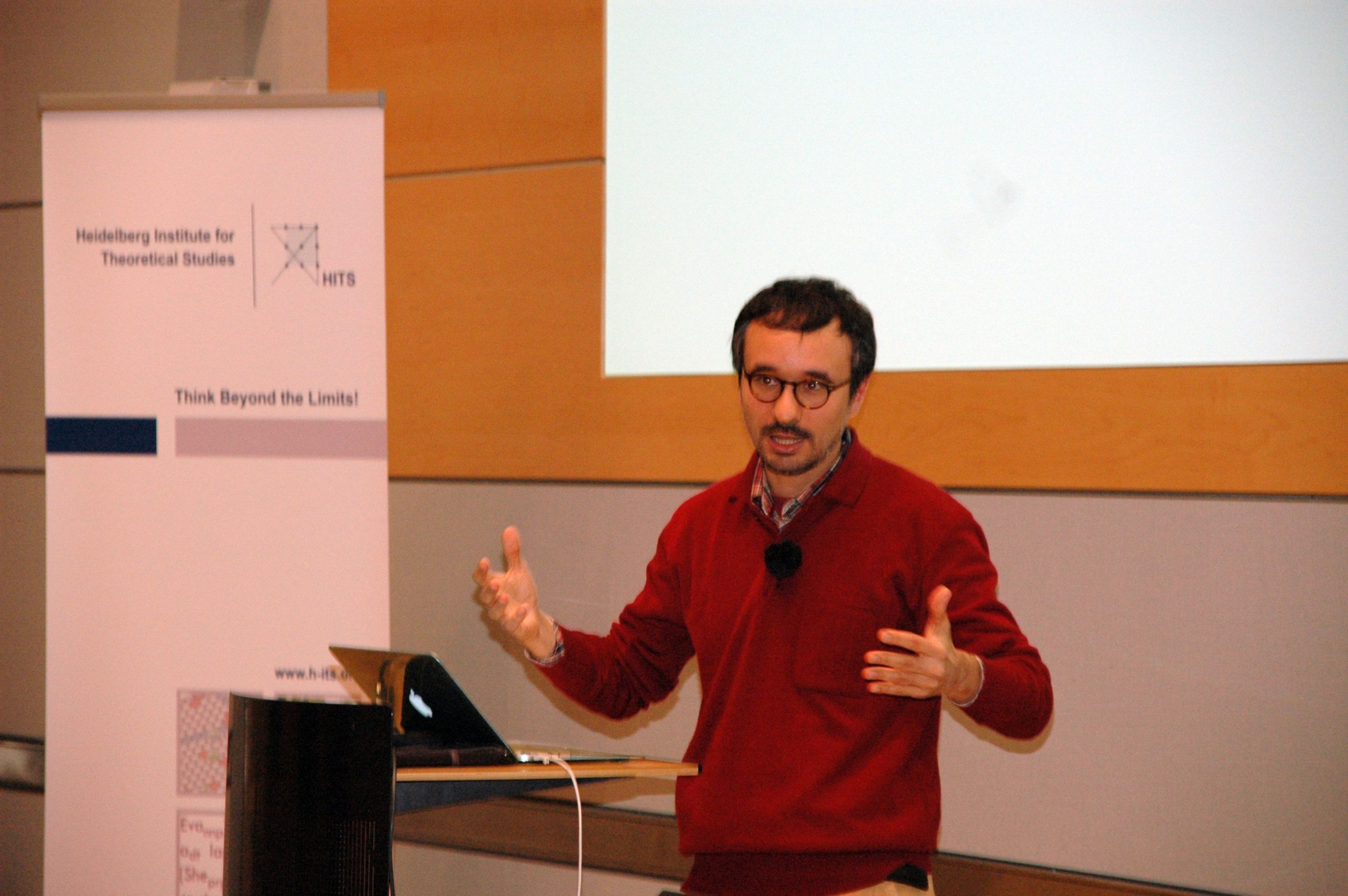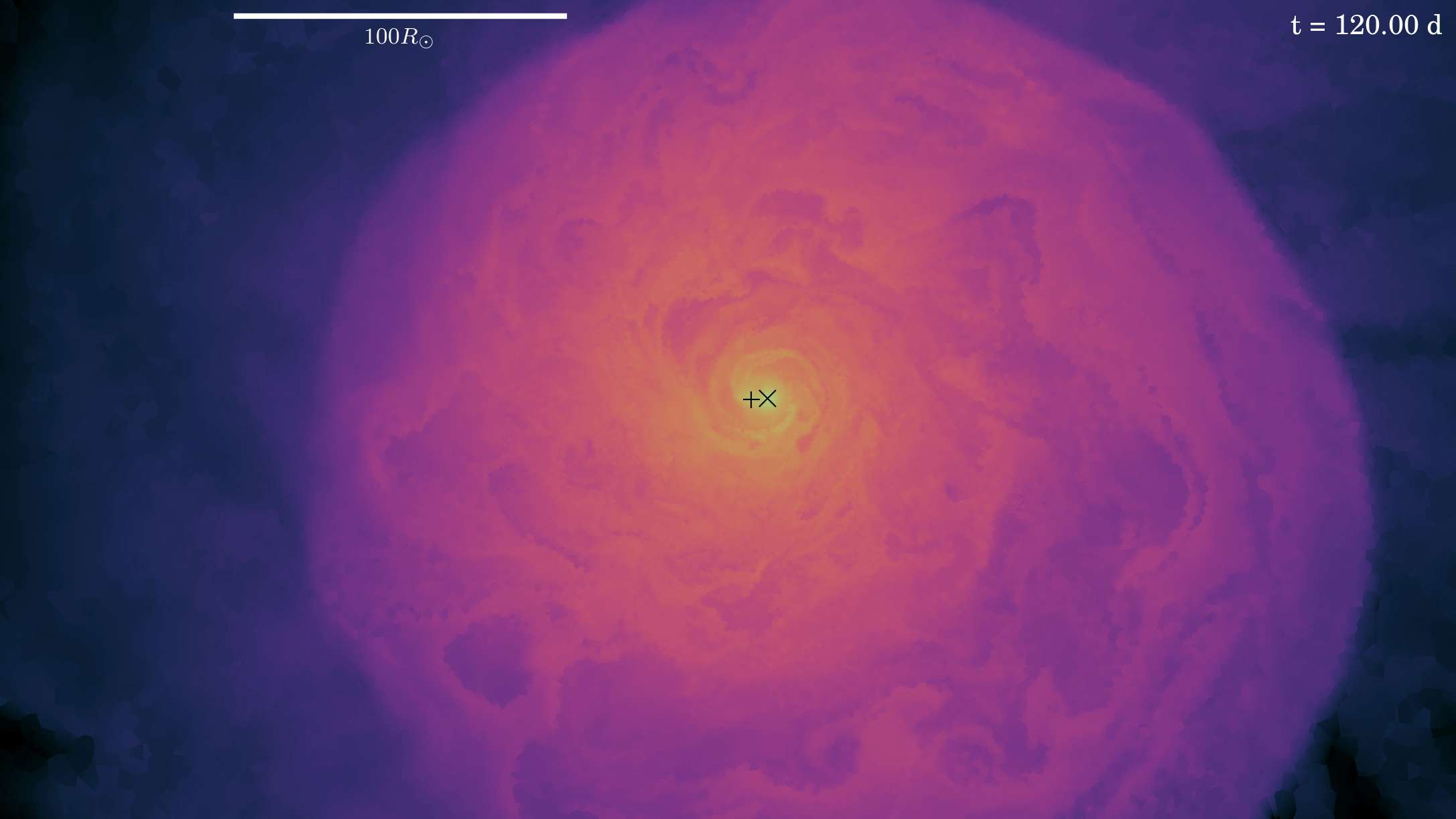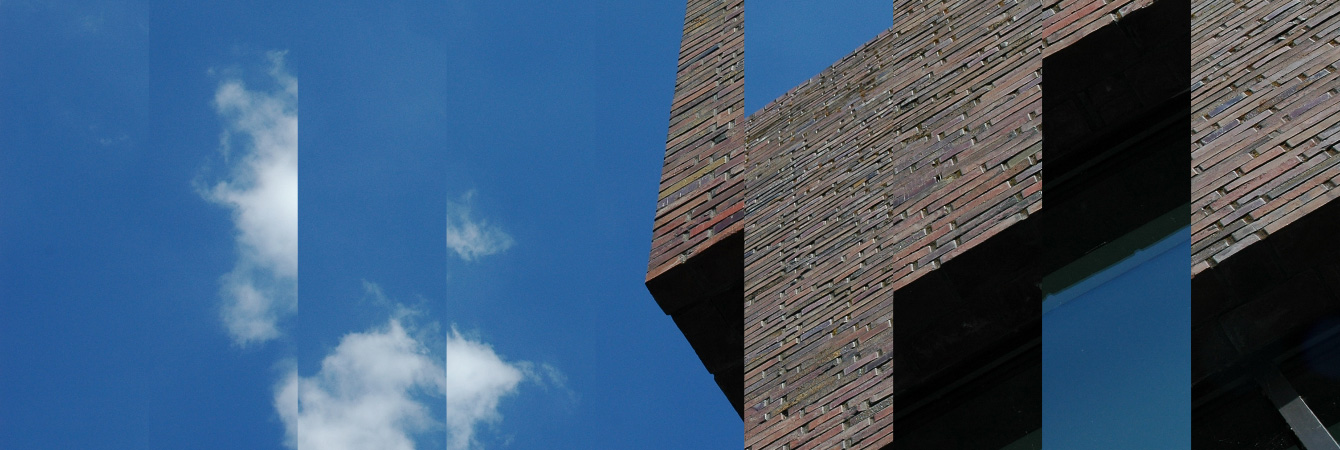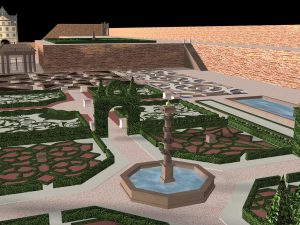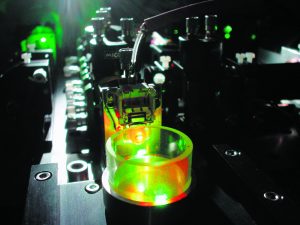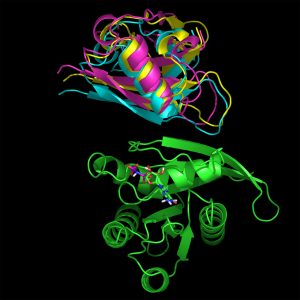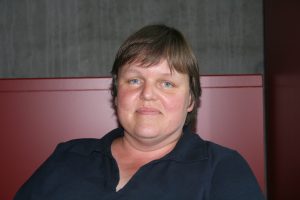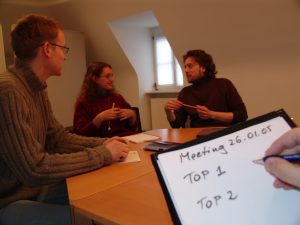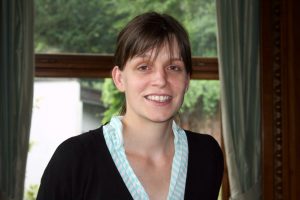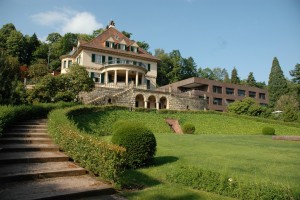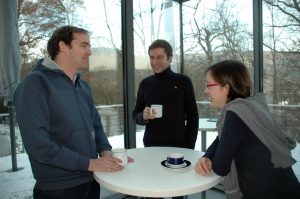1997-2003

Deep Map, tesa ROM, and the book of life: The founding, development, and dividing of the EML
By founding the European Media Laboratory GmbH (EML) in the summer of 1997, Klaus Tschira intended to ignite new areas of research in applied computer science. The main aim of the EML was to develop new technological concepts that could be transferred to the market through research and development and ultimately to convert these concepts into consumer products. The Klaus Tschira Foundation was one of the EML’s clients. Much of what initially sounded like a bunch of hocus pocus regarding future technologies when the EML began its operations in 1997 would later prove critical to technological devices such as smartphones.
Our motto: “Think Beyond the Limits!”
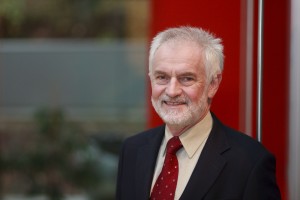
In January 1998, Andreas Reuter – an experienced expert in computing – became the Managing and Scientific Director of the EML. A professor of computer science, Reuter had been the founding director of the “Institute for Parallel and Distributed Systems” at the University of Stuttgart. Andreas Reuter and Klaus Tschira also contributed to the EML’s motto, “Think Beyond the Limits!” The motto put into words the graphic logo of both the KTS and the EML, which depicts a puzzle in which the player has to connect nine points in a square with four straight lines without picking up his or her pen. The puzzle can only be solved by extending the lines beyond the limits of the square.
The participants of the two-week workshop on “Top-Level Ontologies” – which took place in 1998 at the Villa Bosch and was initiated by Klaus Tschira – were also required to think beyond the limits. The workshop was attended by prominent scientists,including American computer scientist and Turing Prize winner John McCarthy and British philosopher Richard Stanley Peters.
Location-based services

At the same time, the first EML project, “Deep Map,” began. This project focused on the creation of a portable electronic city guide. The visionary geoinformatics research that was conducted later gave rise to “Heidelberg Mobil International GmbH,” a company that develops cell-phone navigation systems for cities and major events and that now belongs to BridgingIT GmbH.
In July 1999, a spectacular international video conference took place at the Villa Bosch and significantly increased the public’s awareness of the EML. The C-Star Project included partners from Japan, Italy, and the US and led to the creation of a computer-based interpretation system for six languages that could be used on portable electronic tourist guides. As part of the event, the EML presented an initial prototype of its project “Deep Map,” which enabled tourists to navigate through Heidelberg with the assistance of computer technology. At the time, it was necessary for the user to carry a small computer on their belt, a laptop in their backpack, and a camera on their head.
In 2001, the EML organized the International Conference of Data Engineering (ICDE). Computer scientists from all over the world met in Heidelberg to discuss the conference’s main theme: how to channel the growing flood of data in the 21st century.
The Winter King’s garden
The EML later participated in numerous projects supported by the European Union and the Federal Ministry of Education and Research (Bundesministerium für Bildung und Forschung; BMBF). One of these projects led to the digital reconstruction of the historical “Hortus Palatinus” in 2003. At the beginning of the 17th century, Elector Palatine Frederick V, the “Winter King,” commissioned the construction of a vast, terraced garden around Heidelberg Castle. This garden was never completed.
The EML staff compared the terrain of the modern castle garden – an area of approximately 50,000 m2 – with the original plans of architect Salomon de Caus and other available sources, including paintings and engravings. Together, they were able to create a three-dimensional computer model through which the garden’s “visitors” could move virtually. The EML scientists were awarded the Research and Innovation Prize of the Rhein-Neckar Metropolitan Region Foundation for their work. One of the award winners – Dr. Rainer Malaka – became Professor of Digital Media at the University of Bremen soon after.
Data on the loose: The EML’s first spin-off
Right from the start, the EML was open to unusual project ideas and had the courage to take risks. When Dr. Steffen Noehte and Matthias Gerspach from the University of Mannheim discovered that adhesive tape could be used as a form of data storage, many people thought they had to be joking. Nevertheless, the two researchers were granted the opportunity to continue their work at the EML – with a team of ten! Three years later, they had founded the EML’s first successful spin-off, “tesa scribos,” which enabled them to reap the fruits of their spectacular project. Today, “tesa scribos” employs around fifty people at its Heidelberg location and another thirty at its Hamburg location.
In 2003, geoinformatics researchers Dr. Richard Leiner and Rüdiger Wolff set up another spin-off. Since then, “Leiner & Wolff.” has developed innovative software for flood protection They also received the Research and Innovation Prize of the Rhein-Neckar Metropolitan Region Foundation in 2006.
Molecules from the computer
In addition to geoinformatics, the EML’s second main focus was on the computational life sciences. At the EML, biologists, biochemists, and computer scientists used the computer to research the complex processes that take place in molecules and cells. Due to the fundamental nature of such projects, these and other research groups were transferred to a non-profit company – EML Research gGmbH – in September 2003. EML GmbH continues to work on location-based systems and to pursue its original “Deep Map” scenario. However, since 2007, its main focus has been on speech technology.
2003-2009
EML Research: Sycamore, BIOMS, and galactic ideas
In the years that followed, EML Research – with its five initial research groups – likely remained the only scientific research institute in Germany in which the quota of women in management positions exceeded 50%. The three group leaders Dr. Isabel Rojas (“Scientific Databases and Visualization,” SDBV), Dr. Rebecca Wade (“Molecular and Cellular Modeling,” MCM), and Dr. Ursula Kummer (“Bioinformatics and Computational Biochemistry,” BCB) and their teams developed new models, simulations, and databases to analyze complex biological processes. One such example is “Sycamore,” a web-based environment that not only makes a set of computational tools and methods available but that also helps biologists to select the most appropriate method for a given task – for example, for a biochemical simulation.
Research from all three groups contributed to “Sycamore”: the COPASI software package, which analyzes and simulates biochemical processes; the PIPSA software, with which parameters for simulations are derived from three-dimensional models of protein structures; and the databases of the electronic metabolic atlas, ELSA.
BIOMS: An investment in smart minds
EML Research group leader Ursula Kummer became the co-coordinator of the German Center for Modelling and Simulation in the Biosciences (BIOMS), which was founded in 2004. The German Cancer Research Center, the EMBL, the Max Planck Institute for Medical Research, and Heidelberg University are also involved in BIOMS. The Klaus Tschira Foundation supported the center financially with a sum of 2.5 million euros, and these funds went exclusively to the promotion of young scientists. BIOMS’ goal is to gain new insights from biological data via mathematical modeling and computer simulations.
Minutes at the touch of a button
Under the direction of Dr. Michael Strube, the computational linguists of the “Natural Language Processing” group also achieved success in their field by developing an annotation system that automatically summarizes meetings and by using Wikipedia as a corpus for linguistic research.
Beyond the Limits: Moving towards a new research approach
The year 2007 marked a turning point in the development of EML Research: Ursula Kummer received a professorship at the University of Heidelberg and left the institute with her group. Since then, she has continued to develop the “Sycamore” software with the MCM and SDBV groups at HITS.
Klaus Tschira spent time reflecting on the institute’s future in line with the motto “Think Beyond the Limits!” For decades, the focus of scientific research had been on experiments in which vast amounts of data were produced. In Tschira’s mind, the world of academic research lacked theories and the necessary methodological tools to gain new insights from these mountains of data. He therefore imagined that a multidisciplinary institute would enable researchers from different fields to work on this task and exchange views on their methods. Not only was Tschira thinking about biology, but as a fan of astronomy, he also had galaxies and supernovae on his mind. After all, there are many questions that can´t be answered only with observations and experiments and require a theoretical understanding, be it in life sciences or astrophysics.
The plans for a “Heidelberg Institute for Theoretical Studies” were driven forward by Klaus Tschira and Andreas Reuter. In addition to the life sciences, the research fields of scientific databases and computational linguistics as well as theoretical astrophysics, statistical methods, and computer science were intended to be included. The institute was planned to grow larger than EML Research and would eventually house around 120 scientists in about ten groups.
Chemist Frauke Gräter, who came to Heidelberg in 2009, and astrophysicist Volker Springel, known for his work on the Millennium Simulation, soon joined the planned institute.
It was now time for the “HITS” experiment to begin.
The idea
Klaus Tschira began pursuing his ideas for a new institute in 2007. He felt that scientific research at the time lacked theories and the necessary methodological tools to analyze the mountains of scientific data that were available. For decades, the focus of scientific research had been on experiments in which vast amounts of data were produced. Tschira therefore imagined a multidisciplinary institute in which researchers from different fields could work with these data and exchange their methods. Not only was Tschira thinking about biology, but as a fan of astronomy, he also had galaxies and supernovae on his mind. After all, there are many questions that can´t be answered only with observations and experiments and require a theoretical understanding, be it in life sciences or astrophysics.
The plans for a “Heidelberg Institute for Theoretical Studies” were driven forward by Klaus Tschira and Andreas Reuter. In addition to the life sciences, the research fields of scientific databases and computational linguistics as well as theoretical astrophysics, statistical methods, and computer science were intended to be included. The institute was planned to grow larger than EML Research and would eventually house around 120 scientists in about ten groups. Villa Reiner, located adjacent to Villa Bosch, the home of the Klaus Tschira Foundation, proved to be the ideal location for such an institute.
2010
The beginning

HITS will be a very multidisciplinary institute. I believe that the intimate mixture of researchers from different disciplines will prove particularly stimulating.
Klaus Tschira, 8. März 2010
HITS was established on 1 January 2010 when EML Research gGmbH changed its name. In March, the institute’s founding was celebrated with an opening colloquium. The keynote speaker was Jeannette Wing, who described computational thinking as a key skill in the 21st century. The opening event featured astrophysicist Volker Springel, who became the first researcher to be both a HITS group leader and a professor at the Heidelberg University.
Heidelberg University and HITS also collaborated to organize the 22nd International Conference on Data Management SSDBM that summer. Moreover, amongst other projects, HITS worked on data management and simulation methods in the BMBF network “Systems Biology of the Liver.” HITS continued to grow: by the autumn, computer scientist Alexandros Stamatakis had launched the new “Scientific Computing” research group.
2011
Spider silk and open doors
Under the direction of Frauke Gräter, the “Molecular Biomechanics” (MBM) group dealt – among other things – with the fascinating properties of spider silk, which is more tear-resistant than steel. Using computer simulations, the group found that different molecular structures in the silk provide support and elasticity. These results can aid in the development of new, more tear-resistant plastics. Moreover, HITS opened its doors for an open house for the first time. In addition, the young institute made an appearance at the University of Heidelberg’s 625th anniversary with some exhibits at the so-called “UniMeile” (“University Mile”).
2012
Prizes, press, and professorships
In addition to being one of the “big hitters in astronomy”, HITS astrophysicist Volker Springel is one of the most cited authors in his field. In 2012, he received an ERC Starting Grant for his research on galactic formation and evolution. Additional ERC grants for HITS researchers were awarded in the following years.
In the spring, HITS launched a “Journalist in Residence” program, which allows journalists with a focus on science journalism to engage in advanced computer-aided, data-driven research away from the pressures of everyday life. The first journalist in residence at HITS was renowned science journalist Volker Stollorz in June 2012.
The close relationship between the Heidelberg University and the KIT Karlsruhe was strengthened via new professorships forRebecca Wade (Heidelberg) and Alexandros Stamatakis (KIT).
2013
Rapid growth: Four new groups at HITS
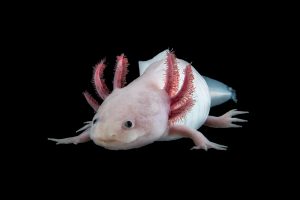
Within just three years, the number of research groups at HITS more than doubled. Instead of five, ten groups were now working on the campus on Schloss-Wolfsbrunnenweg. New additions this year included “Computational Biology” (CBI), “Data Mining and Uncertainty Quantification” (DMQ), “Astroinformatics” (AIN), and “Computational Statistics” (CST).
2014
Scientific quality and organizational solidity
This year saw the fruition of several high-level research endeavours: The astrophysicists led by Volker Springel were successful in developing “Illustris,” the most detailed computer simulation of the universe to date, which they published in “Nature.” Furthermore, Alexandros Stamatakis and his group were involved in two pioneering publications in “Science”: The researchers calculated the phylogenetic trees of birds and insects and thus helped biologists to better understand the evolution of these groups of animals.
The high quality of HITS research was also reflected in the “Highly Cited Researchers” ranking: Tilmann Gneiting (“Computational Statistics”) and Volker Springel (“Theoretical Astrophysics”) were on the list in 2014. By 2016, Alexandros Stamatakis had become the third HITS researcher to join on the list of the most cited researchers in their fields.
In the autumn, HITS was restructured to ensure its long-term operation and further development as an institute after the completion of the initial growth phase. In the future, the institute would be headed by a dual leadership consisting of a Scientific Director and a Managing Director. The new HITS Foundation replaced the Klaus Tschira Foundation (KTS) as the main shareholder. It receives its funds from the KTS. Other shareholders include the Heidelberg University and the KIT Karlsruhe. Moreover, the Scientific Advisory Board was established.
2015
Five years of HITS – A success story
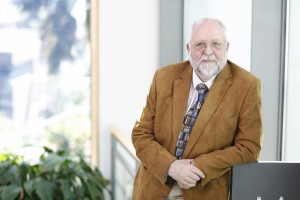
To mark the Klaus Tschira Foundation’s 20th anniversary, HITS organized a scientific symposium in January with high-ranking speakers from politics and science. “Science needs an institute like HITS,” the representative of the Federal Government, Prof. Wolf-Dieter Lukas, said in his welcoming speech. “If Klaus Tschira had not founded it, then it would need to be founded today.”
In fact, the young institute already had a history of success. This included a second ERC grant awarded to a researcher at HITS. With the creation of two new research groups, the “Physics of Stellar Objects” (PSO) group and the “Groups and Geometry”(GRG) group, HITS was now coming to the end of its rapid growth phase.
2016
Change and continuity

This year was marked by a significant transition: Long-time Managing Director Andreas Reuter, who had built up HITS together with Klaus Tschira, completed his work for the institute and moved on to the HITS Foundation as a member of its Executive Board. Dr. Gesa Schönberger took Reuter’s place as the new Managing Director. Since then, Schönberger has led HITS together with regularly changing Scientific Directors.
With the creation of the “High Energy Astrophysics and Cosmology” (HAC) junior group, HITS grew to include 13 groups. With the increasing number of scientists, HITS expanded into additional rooms at a second location in Heidelberg: the “Mathematikon”, on Heidelberg University’s “Im Neuenheimer Feld” campus. This second location has facilitated intensification of interactions with Heidelberg University.
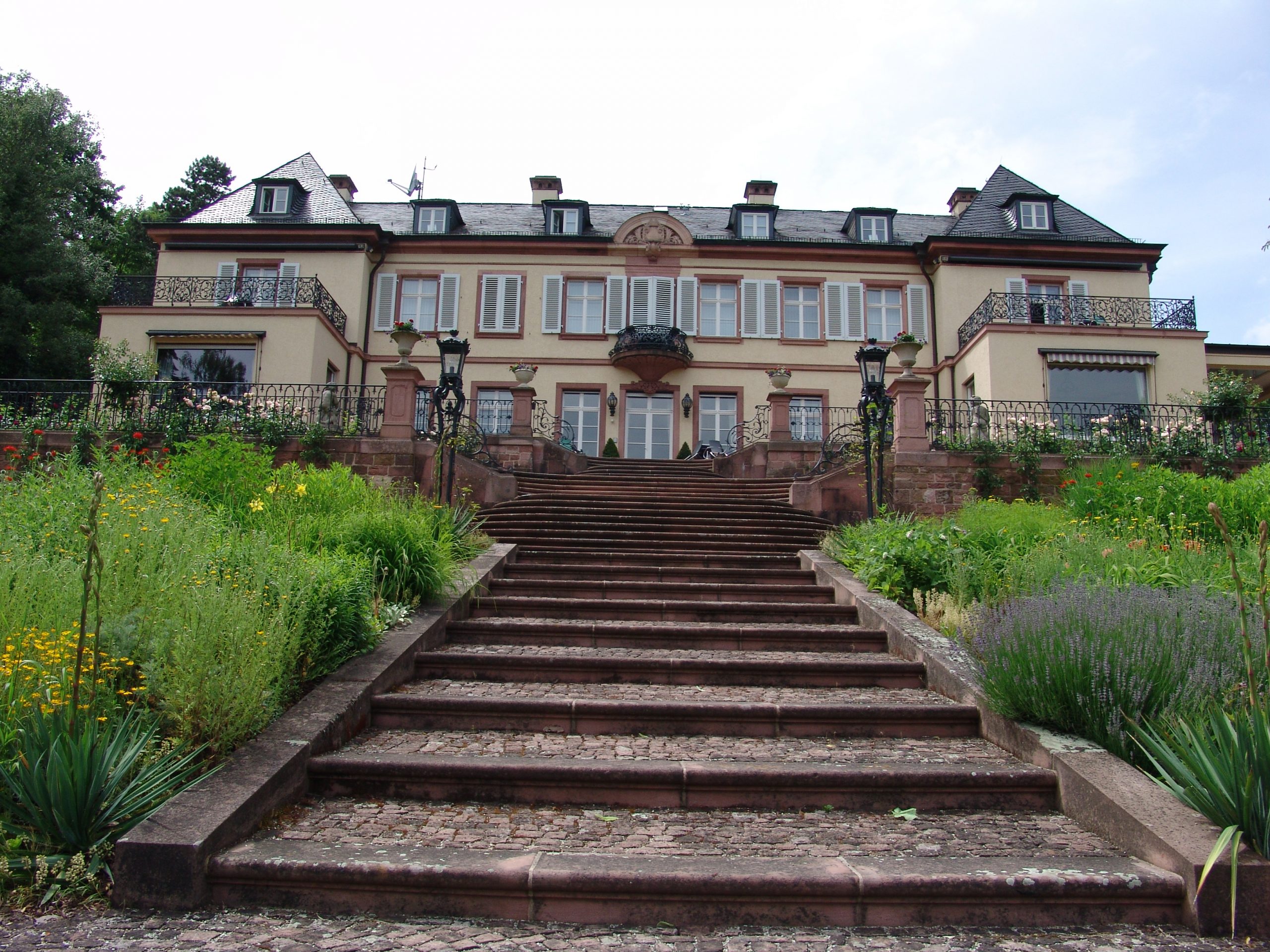
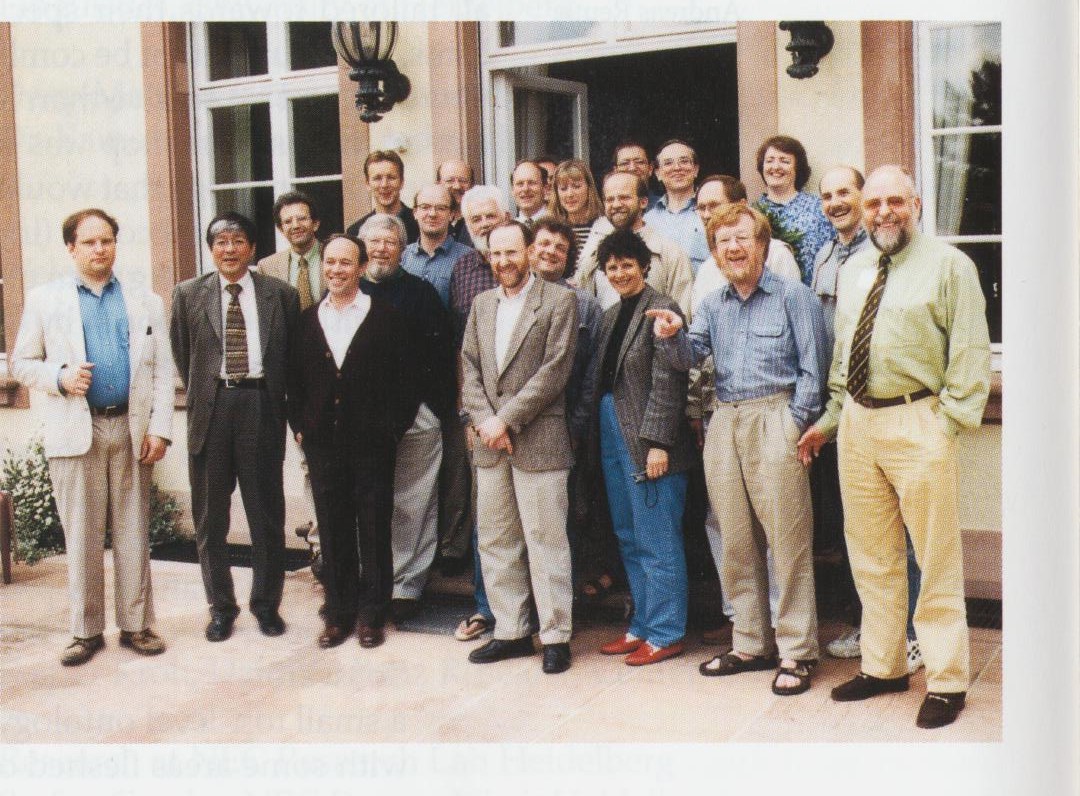
Photo: EML
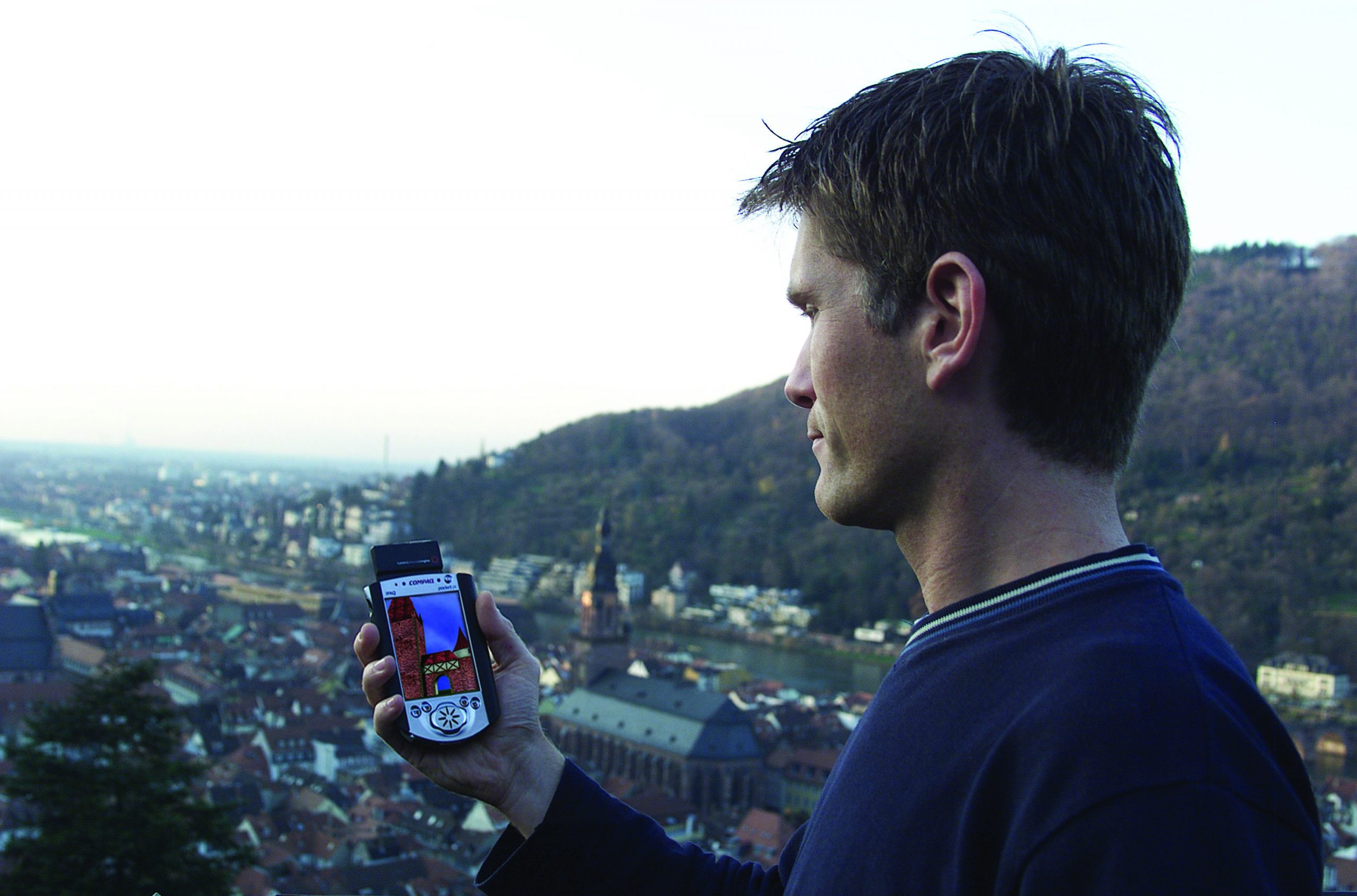

Photo: EML
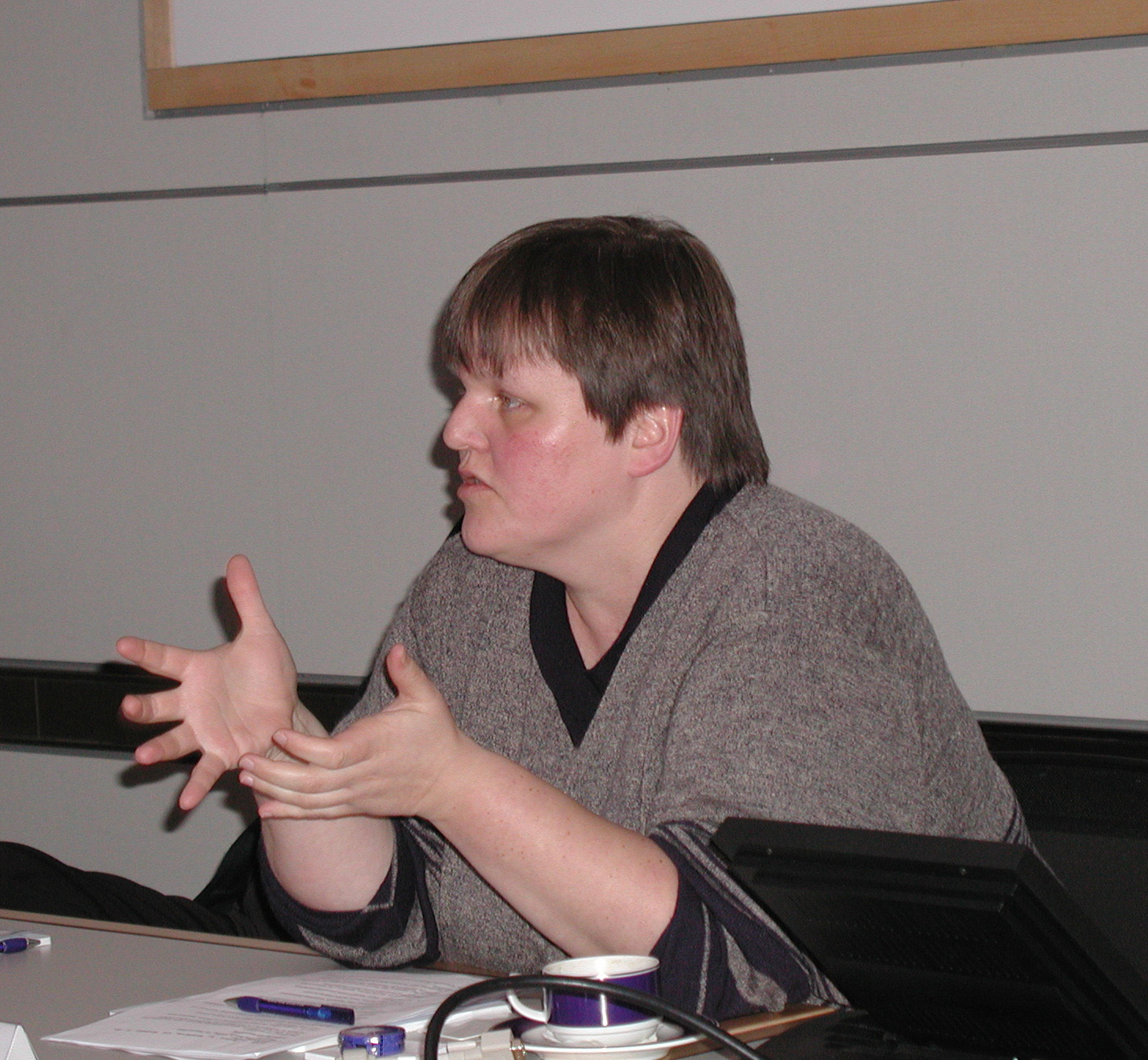
Photo: EML Research

Photo: EML Research
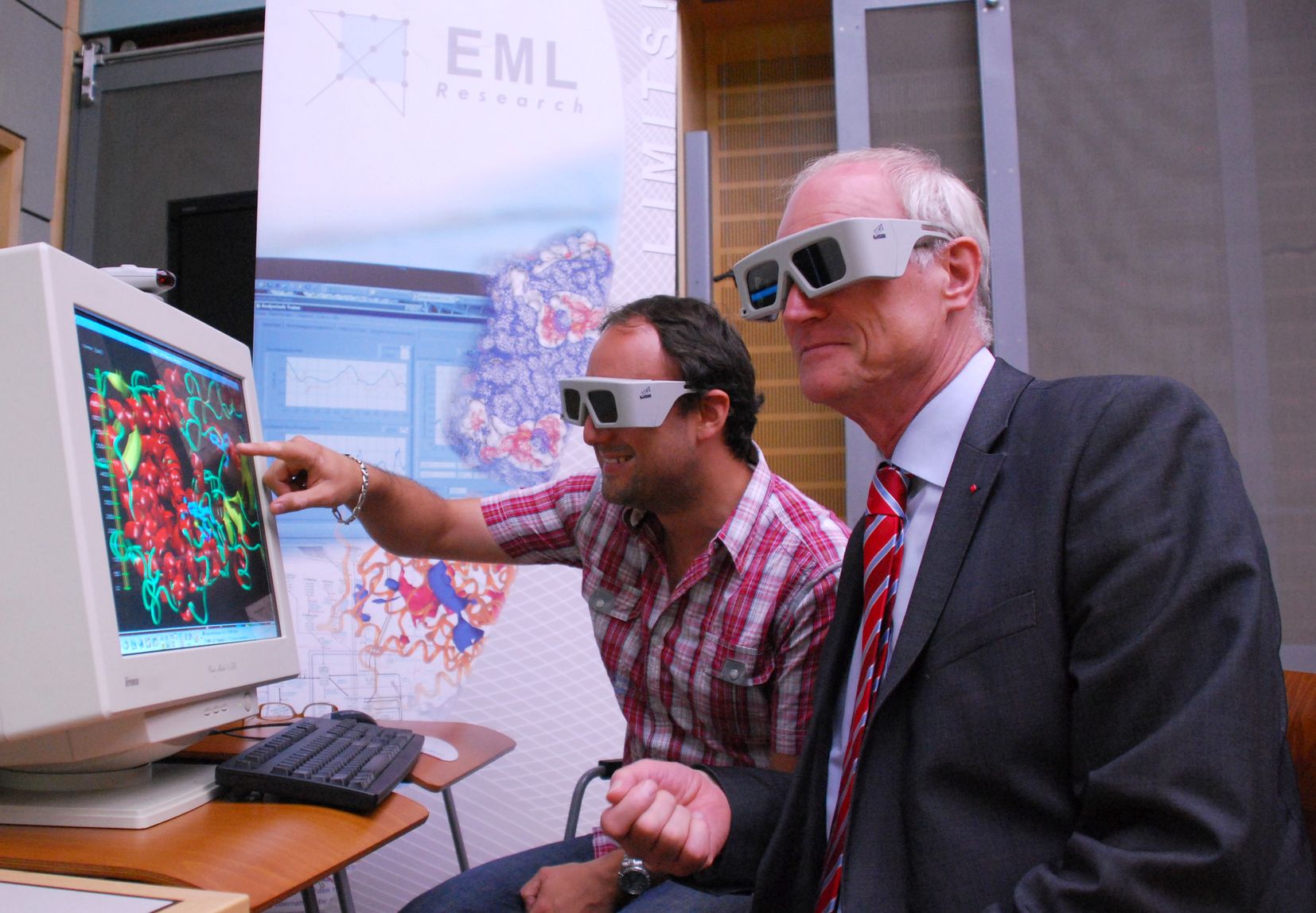
Photo: EML Research
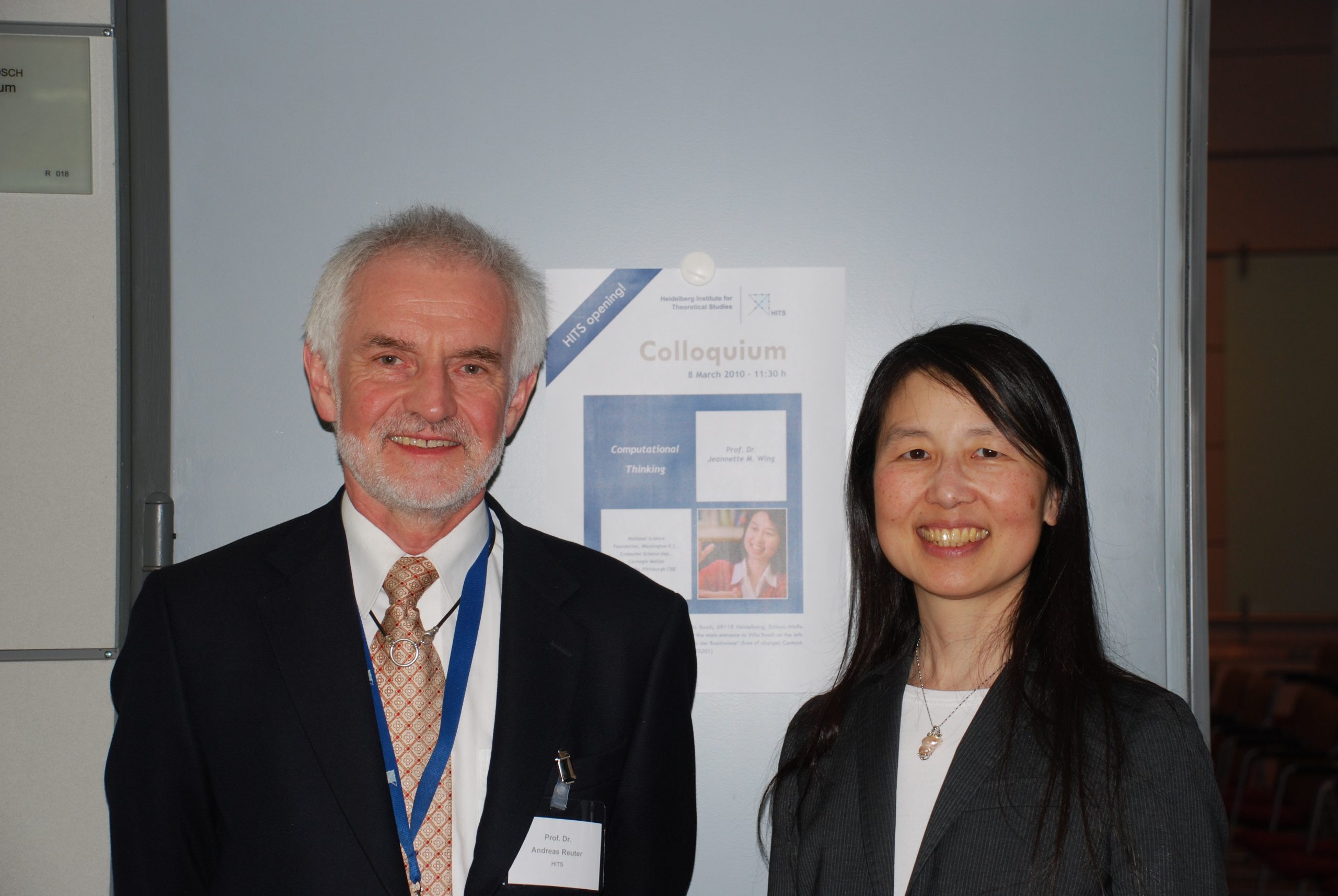
Photo: HITS
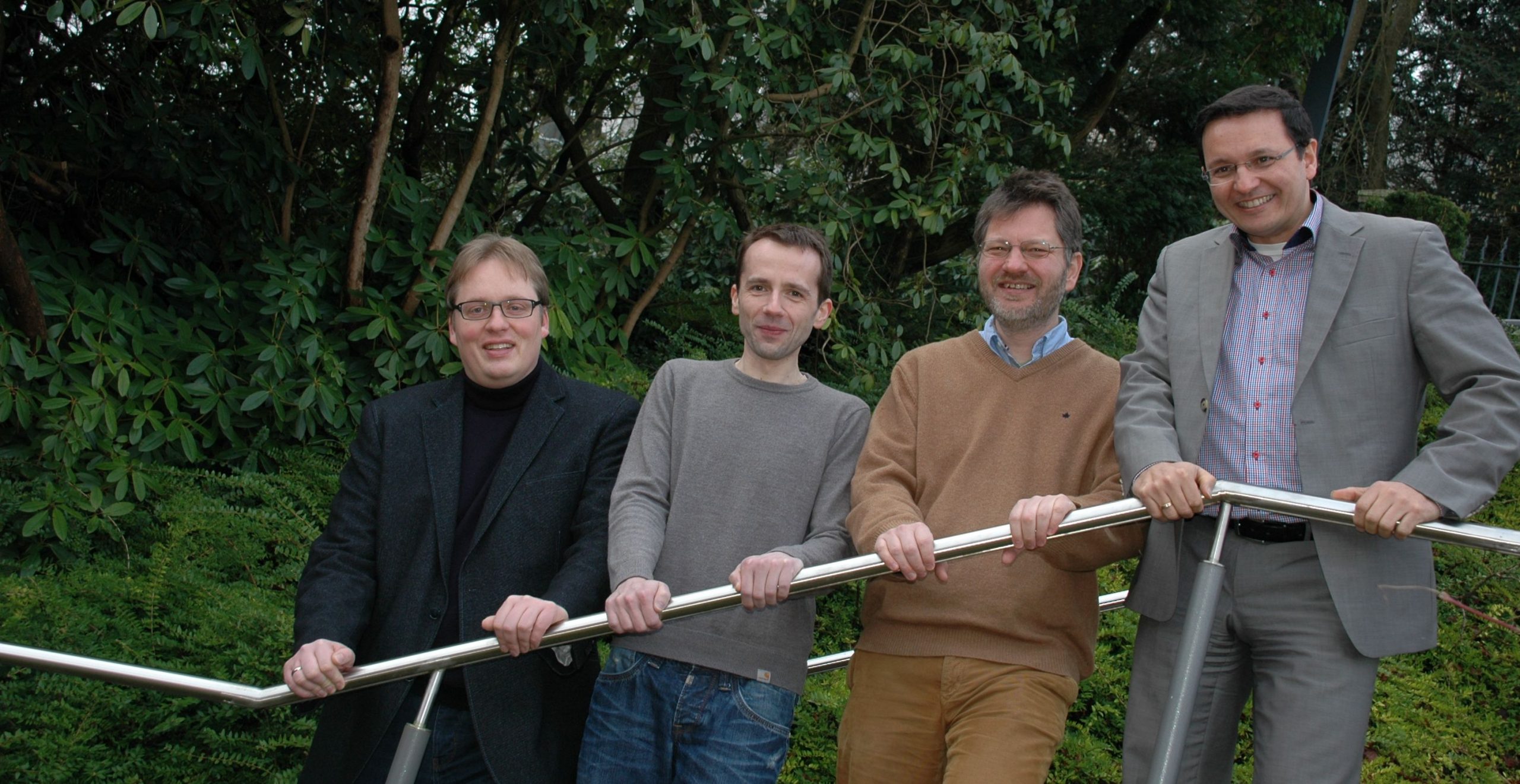
Photo: HITS
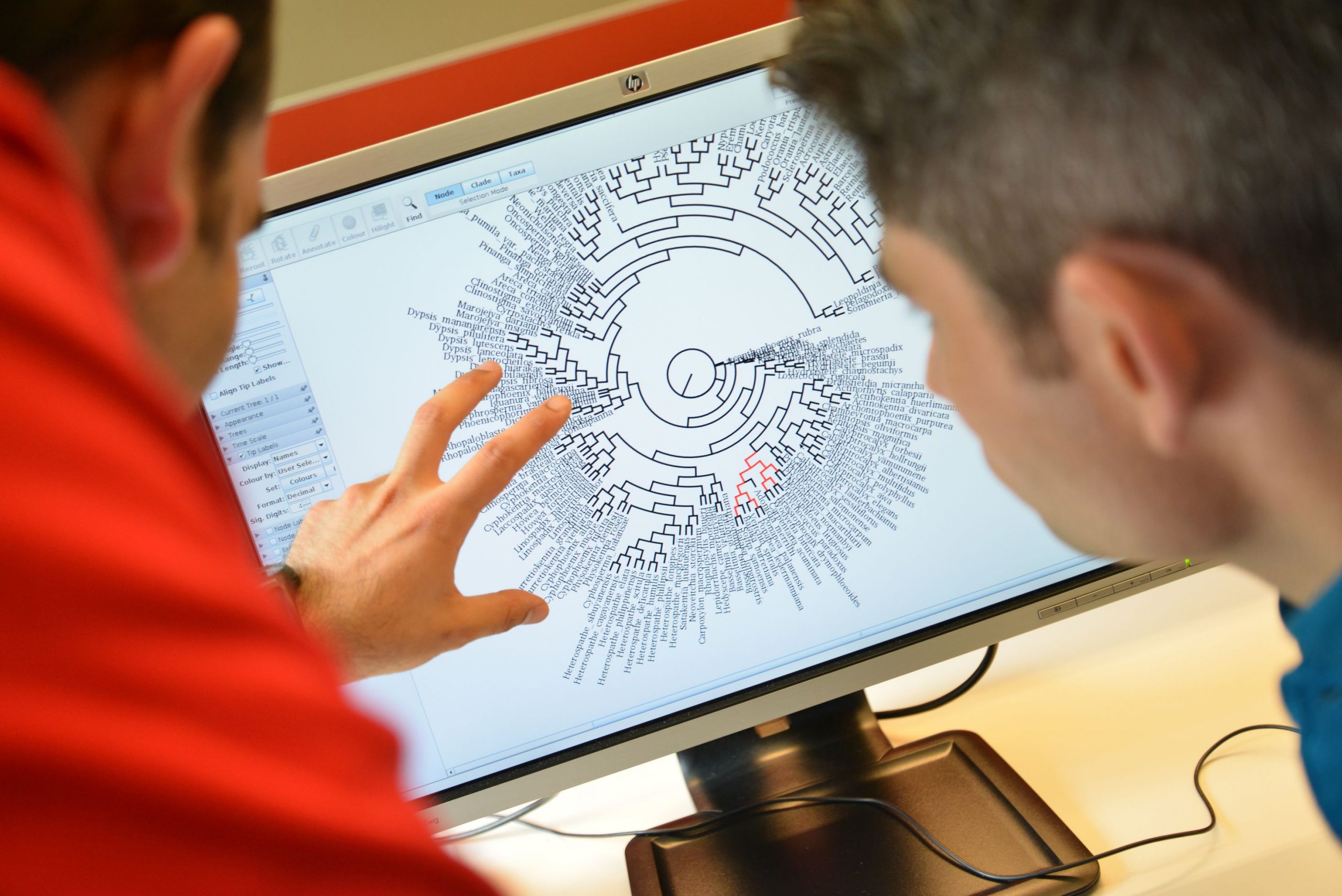
Photo: HITS
